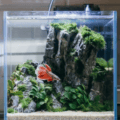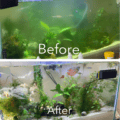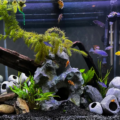As someone who loves nature, I’ve always felt inclined to fill my fish tanks with as many plants as I can, including houseplants.

The golden pothos was one of the few plants I avoided experimenting with in my aquariums because I knew it would not sit well with my other domestic pets.
Unfortunately, for one reason or another, I lost my furry buddies and the only pets I got left with were my fish.
This prompted me to research the pothos plant in detail and find out if I can finally plant it in my aquarium.
Here’s what I found.
Can You Grow Pothos in Your Aquarium Normally?
The pothos plant is a popular house plant that’s relatively undemanding in terms of care.
Its popularity can be attributed to the fact that it can be grown both in soil and in water.
Naturally, this leads many of its owners into wondering if it can also be grown in their aquarium as well. Here’s if you can grow pothos in your fish tank:
The pothos plant is a popular house plant which can also be grown hydroponically. As a result, it is good at extracting enough oxygen from water to support its own growth and can be used as an aquarium plant.
Pothos also feeds on Nitrate from fish water, which helps with your tank’s maintenance.
One good thing about pothos is that you can either grow it emersed or fully submerged underwater.
Whichever option you go with, the plant will grow really fast.
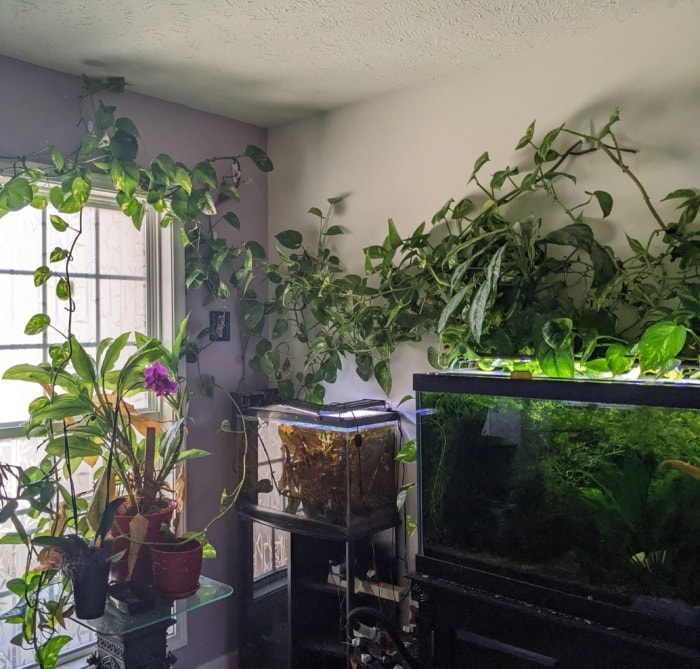
by ArtsySAHM
If it’s fully submerged, you will see both its leaves and roots starting to crawl underwater within a very short time.
However, one thing I picked from my research is that while pothos can live in water, its lifespan reduces when you put the entire plant underwater.
Generally, it should last anywhere between five and ten years when cared for properly.
But if you fully submerge it, your plant’s life span will be closer to five years than ten.
The prolonged exposure to water is also the reason behind the root rot reported by some fish keepers.
My recommendation is to make sure that at least some of the plant is exposed to air.
Ideally, only the roots and stem should be submerged while the rest of the plant (which is basically all the leaves) remains on top of your aquarium.
Such a setup will give you the best results because the leaves get all the air they need while the roots remain in direct contact with water, where they can suck out nitrate.
Overall, pothos is a great and safe plant to have in a freshwater fish tank.
It can be kept with a variety of aquatic species such as Betta fish, Discus fish, and Goldfish.
And even though it carries the spooky name devil’s ivy, it actually brings lots of benefits to an aquarium.
Here are some advantages of growing pothos in water with fish:
- Removes nitrates. The Pothos uses nitrates as nutrients. Because of this, it’s excellent at regulating aquarium water quality.
- Helps control algae.
An overgrowth of algae sucks nutrients in a planted aquarium.
It also deprives the fish tank of oxygen and turns the water green.
A good way to prevent this is to regulate nitrates (which act as fertilizer for algae) by growing pothos in aquariums.
- It’s fish-proof.
Omnivorous fish often eat plants and their roots. The good thing with the pothos is that it has incredibly strong roots that even Goldfish can’t eat or chew on.
- Offers cover.
The long-growing roots of a pothos aquarium plant provide cover for the fry of fish.
- Cosmetic benefits.
In my opinion, a fish tank (or any aquarium for that matter) looks best with plants in or on it.
The fact that you can have pothos either emersed or fully submerged underwater means that you can use them to enhance the cosmetic appeal of your aquarium.
How to Grow Pothos in Your Fish Tank?
If you want to effectively grow pothos in an aquarium, start by placing a few of its cuttings in a separate container away from the fish tank.
This allows the plant to develop roots. From there, you can now transfer it to your aquarium.
Here’s a step-by-step guide that you can easily follow.
It applies to all types of pothos, including golden and marble queen species of pothos.
1. Start with a few cuttings
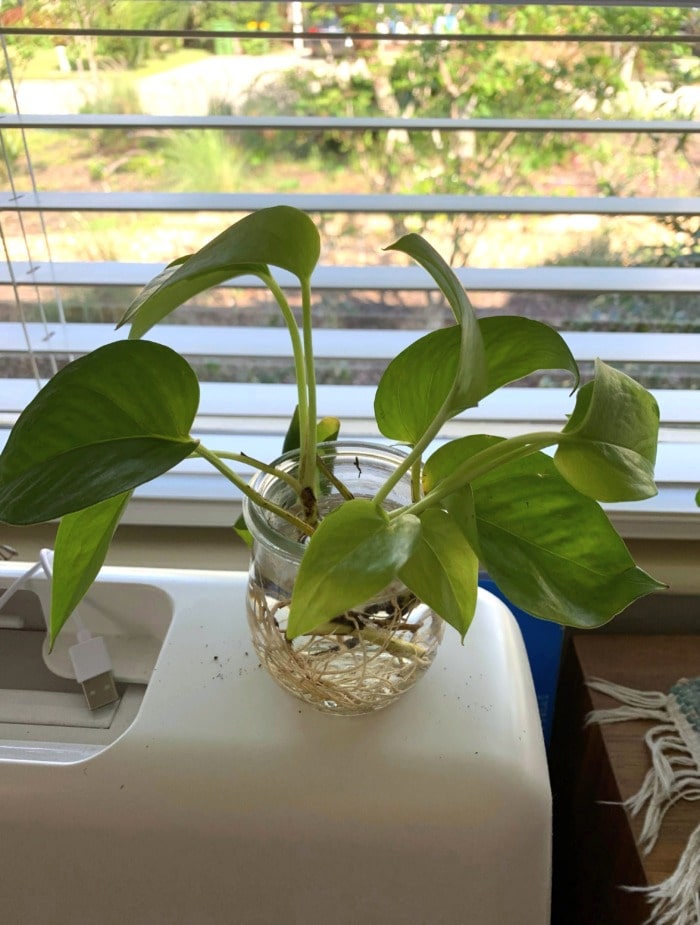
by LocksmithLittle2555
You don’t need an entire pothos aquarium plant. Getting a bite-sized cutting from a plant nursery or a local gardening store will bring you the same results.
Alternatively, if you know someone who already has a pothos aquarium plant and is willing to help, you can ask them to prune a small plantlet for you.
Once you’ve acquired the cuttings, just take a few small ones and put them in a container with dechlorinated water.
In certain amounts, chlorine is toxic to houseplants. So, it’s better to play safe and just avoid chlorinated water altogether.
Related: Does Boiling Water Remove Chlorine and Chloramine?
Finally, place the container along with your pothos cuttings in direct sunlight.
This will help them develop roots.
2. Clean the roots
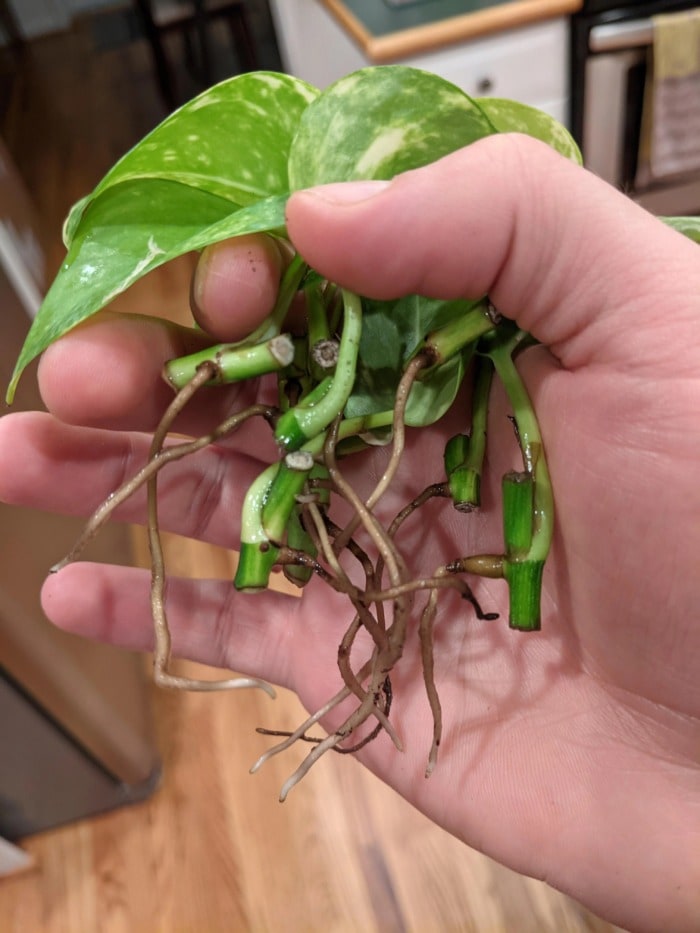
by agirault
You can skip this step if your pothos plant doesn’t have any roots.
In case it does, make sure to thoroughly clean them of any fertilizer and dirt.
This is especially necessary if you bought the cutting.
Chances are the seller may have used fertilizer to grow the pothos.
Introducing external compounds like fertilizer can negatively affect water chemistry in your fish tank.
Such changes could affect the health of your fish, so you should keep the aquarium’s ecosystem as natural as possible.
3. Transfer to aquarium
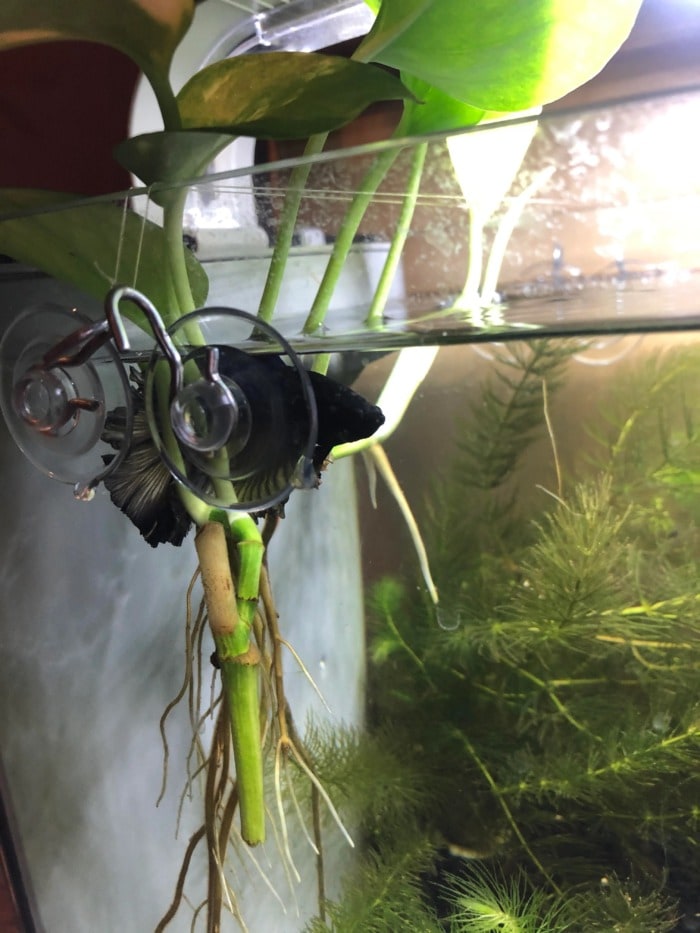
When the roots reach four to five inches in length, you can transfer the pothos cutting into your aquarium.
Make sure to anchor it so that only the roots and part of the stem are submerged in water.
In an ideal setup, the leaves should be above water so they can get as much air as possible.
There are a lot of creative ways to anchor your pothos, but the one I found the most helpful was to make a plant holder using some plastic zip ties and a suction cup airline holder.
This way you can attach the plant to the back of the aquarium using the suction cup, and anchor it with the zip ties.
Fish typically won’t eat pothos, but if you have any plant-eating fish, consider hanging the pothos to your aquarium filter anyway.
This will guarantee its safety by keeping it away from the fish’s reach.
Author’s note: Make sure the pothos aquarium plant is as far away as possible from the filter’s motor to prevent its roots from clogging it up when they grow too long.
You can also place the roots in the sump of your saltwater aquarium.
Doing this will limit how far they venture into the fish tank, so they’ll end up forming a root ball.
4. Provide artificial light
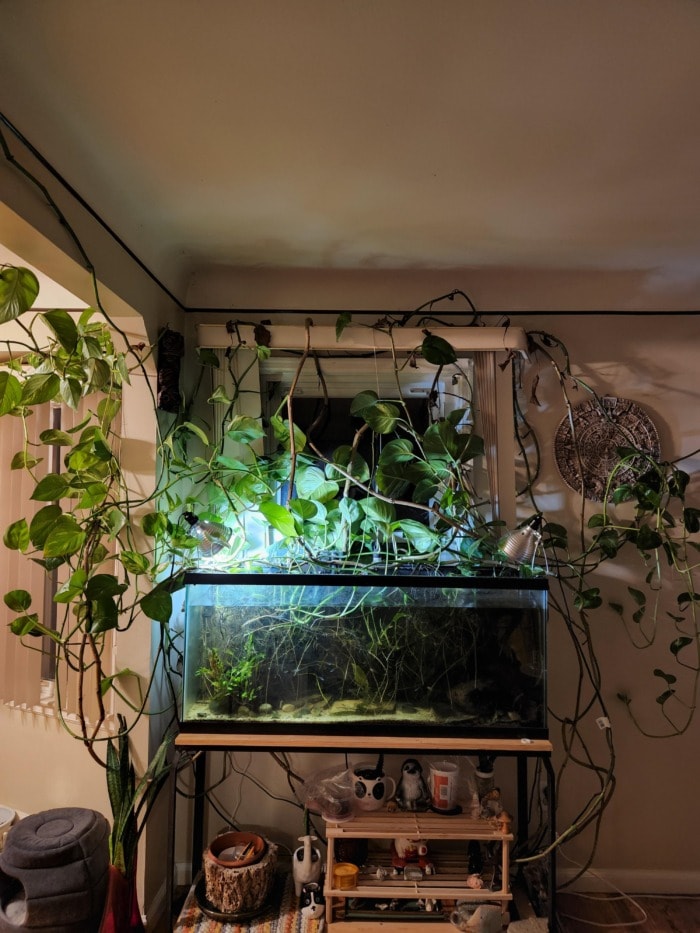
by BeefinBenita
Pothos plants grow faster when exposed to artificial light. That, combined with the bioloads and fish waste in aquarium water, will have your plant growing more leaves and roots in a matter of days.
Ultimately, the pothos will turn into a beautiful vine that you can guide up the wall or along any structure that’s close to the aquarium.
If need be, you can always cut off a stem to propagate the plant into a different aquarium.
One important thing to mention is that pothos can, in fact, be left to float in an aquarium.
This is an option if you are sure that your fish won’t attack or try to eat the plant.
Simply insert its roots directly into the aquarium’s water and let the leaves atop the tank.
The aquarium’s lid will hold the pothos in place and prevent it from falling in.
Why is My Pothos Plant Not Growing?
Besides ammonia, the other primary nutrient that a pothos aquarium plant uses for nourishment is nitrate.
If your pothos is not growing, then chances are it’s lacking both of these nutrients.
It may experience stunted growth, resulting in dry and brittle leaves.
At times your pothos plant may be doing really well until you transfer it to an aquarium, and its leaves start turning yellow.
This typically occurs due to one of the following:
- You’ve exposed the plant to direct sunlight
- It’s not getting enough nutrients
- There’s algae build up in the aquarium
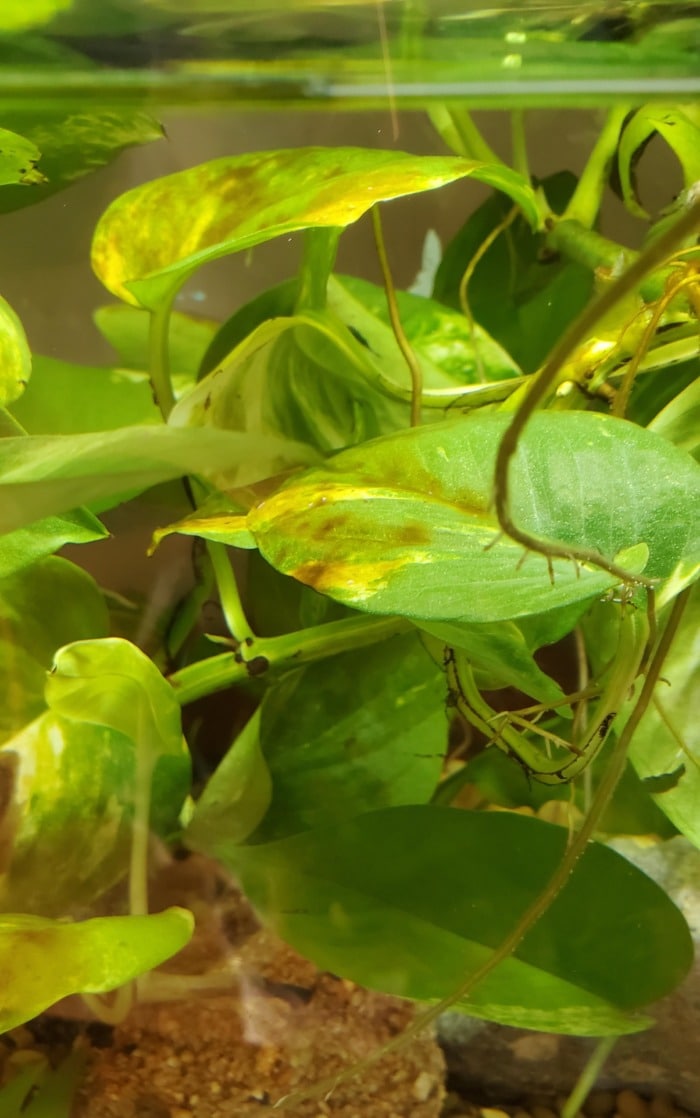
by jstar1226
There are a few things you can do to try and reverse the yellowing of leaves.
First, make sure the aquarium and pothos plant are some distance away from direct sunlight.
Secondly, consider using an additional source of nutrients. Chances are the waste in your aquarium simply isn’t enough to fuel the growth of your pothos.
This is especially the case if the tank has just one or a few fish, and if the fish species generally doesn’t produce a lot of waste.
Finally, check that there’s no buildup of algae on the pothos’ roots. In case there’s any, clean it off and place the aquarium away from direct sunlight.
This will encourage the pothos to grow more leaves, and it will be able to fight off algae buildup on its own.
Final Words
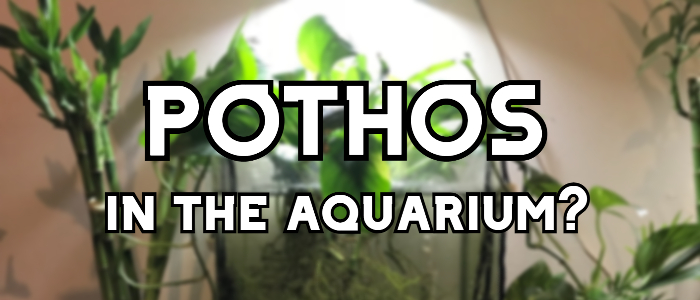
I hope this post has managed to convince you that having pothos in water with fish is a good idea.
The thing I like the most about this plant is that it requires little to no effort to grow.
All you need to do is transfer a small cutting with roots into your aquarium, and it will turn into a beautiful vine.
That’s the other thing – pothos in a fish tank is quite aesthetic.
Throw some artificial lighting in there and this plant can create a little sightly spot in whichever room you place it.
Just make sure that it gets enough nutrients and is away from direct sunlight.
Otherwise, its leaves may start to turn yellow.





